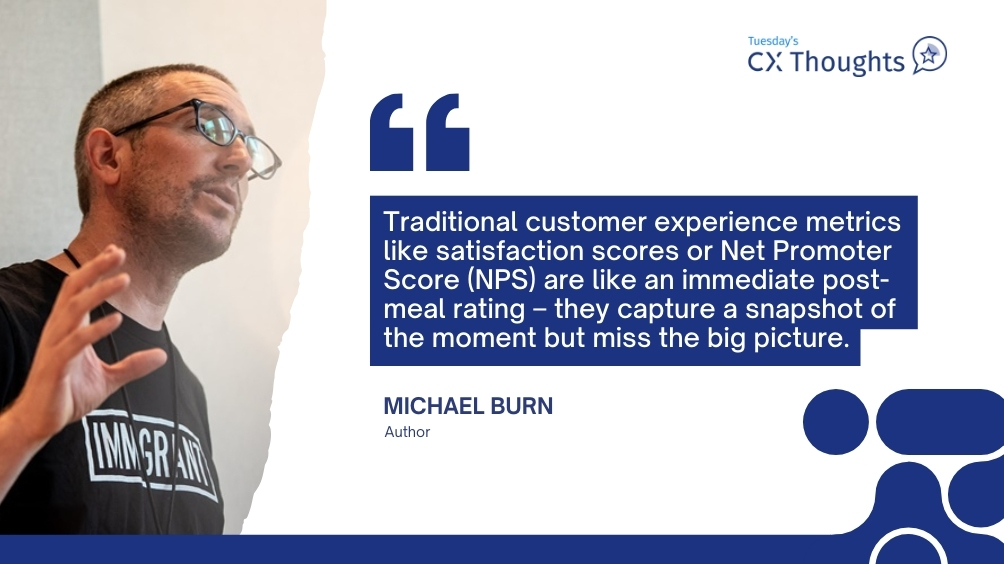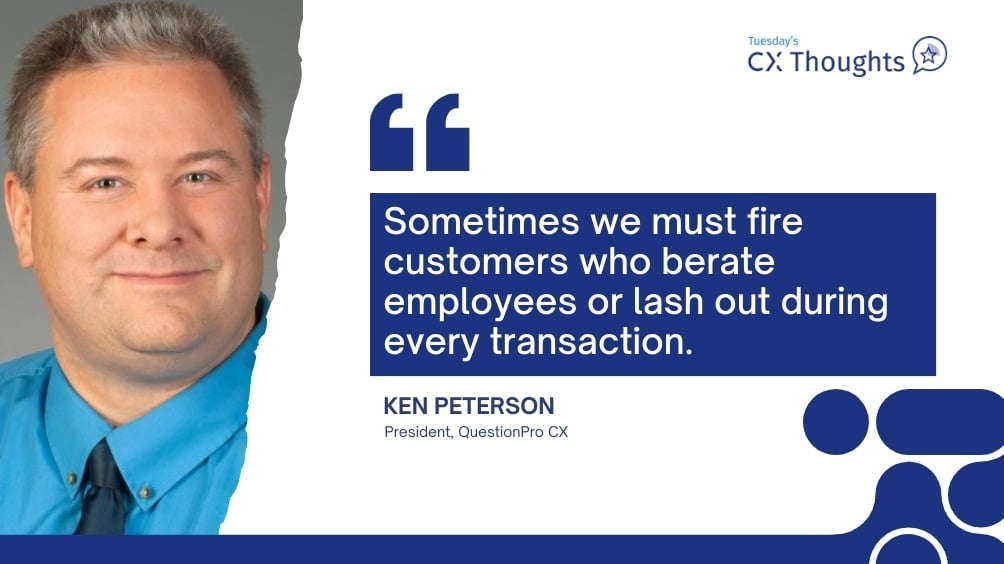
The employee experience difference between Managers and Individual Contributors
The Great Resignation is still happening — and, in some cases, with bigger intensity than ever before. Many people are still planning on making changes, one that is better for their overall being, not just their work, or career.
Fortunately, organizations all over the globe are showing that they’re up to the challenge: most companies are open to trying different ideas, such as rethinking their compensation and incentive plans, trying hybrid and flexible work, fast-tracking careers, etc. But, there is a downside: brainstorming new strategies and executing them often happens at executive levels, and middle managers and individual contributors are often not involved in this process.
Why is it so important to include perspectives and experiences of workers from different levels of the organization in the decision making process? In our February 2022 study we surveyed over 3,000 workers from the United States, United Kingdom and Germany and looked at how individual contributors’ answers compared to those of managers.
Here’s what we found…
Successful organizations, no matter their size and industry, need a workforce that’s motivated and high-performing, across the different levels of the organization. How do you make sure you have that? One way is by checking that the different values, goals, initiatives, you are implementing company-wide are actually reaching all of the individuals in your organization.
In our study we found that individual contributors and managers have some significant differences in how they experience company culture. Most often this difference is not intentionally created, and even often goes undetected. By the nature of how most companies are set up, managers tend to have a louder voice, and their experience is generalized across the company. But what we’re seeing is that employee experience is anything but uniform, and we believe it’s important to understand these differences to make well informed decisions about your culture.
- We asked workers: How satisfied are you with where you are with your career at the moment?
Overall, only 54% of people said they’re satisfied with where they are with their career at the moment. We have to remember that this data is being collected months into historically high turnover rates around the world. People are making changes, but data says they are far from being done.
When we compare managers to individual contributors, we see that 61% of managers are satisfied or very satisfied with where they are in their career at the moment, compared to only 52% of individual contributors saying the same. So, there’s a 9% difference in satisfaction between these two groups.
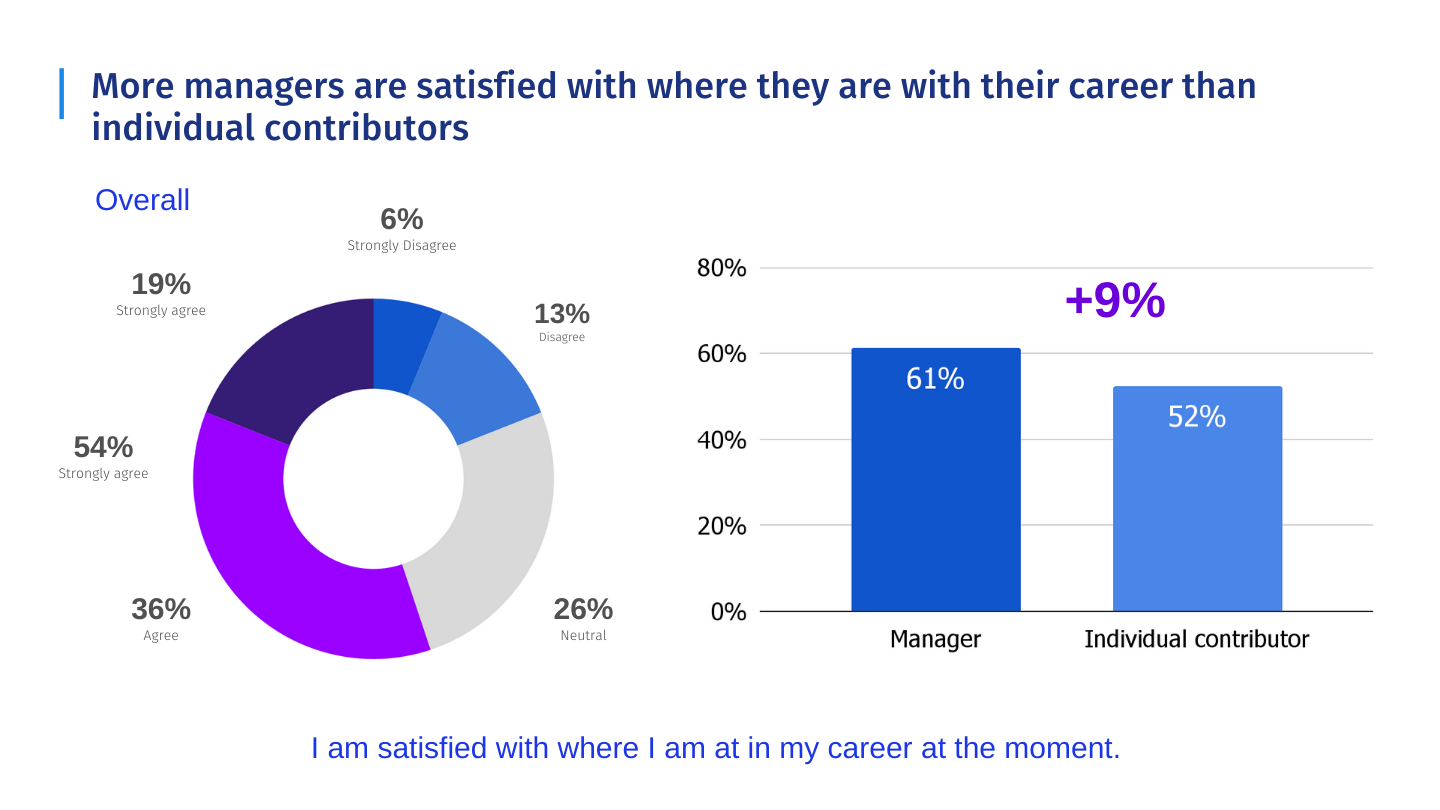
The next great challenge is that most workers don’t see an opportunity to advance their career at their current company. That means that if they are not satisfied with where they currently are in their career, they are likely to look for their next step at another company, not the one where they are currently employed.
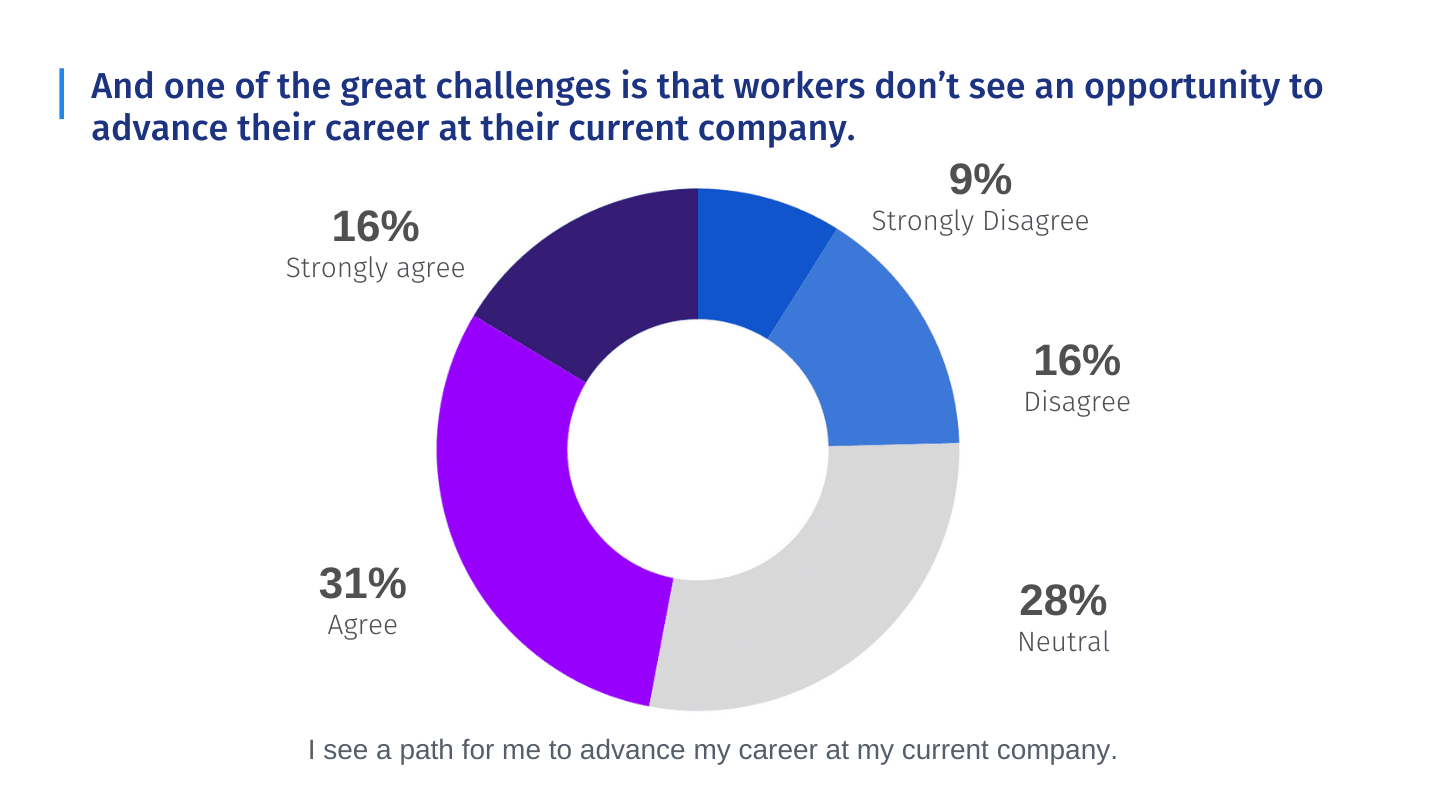
For some organizations, depending on their size and if a person is looking to make upward movement, at some point there’s only so many positions available. However, we often see that people leave because they aren’t aware of other lateral opportunities that exist inside their company, and that they would actually be interested in. So, the problem doesn’t necessarily lie in the lack of availability, but often in the lack of visibility of available opportunities.
This tends to be a big organizational problem, and there can be particular concerns with specific departments. Troubleshooting the issue with data is a lot easier and this could give leaders more clarity over which teams are struggling the most with how to advance at their own company.
Whether it’s through technology, meetings, encouraging managers to have one on ones, etc. there’s a lot of different ways to share this information, it’s important to be constantly aware about people’s goals. With today’s work environment, this is just becoming more and more critical for every organization.
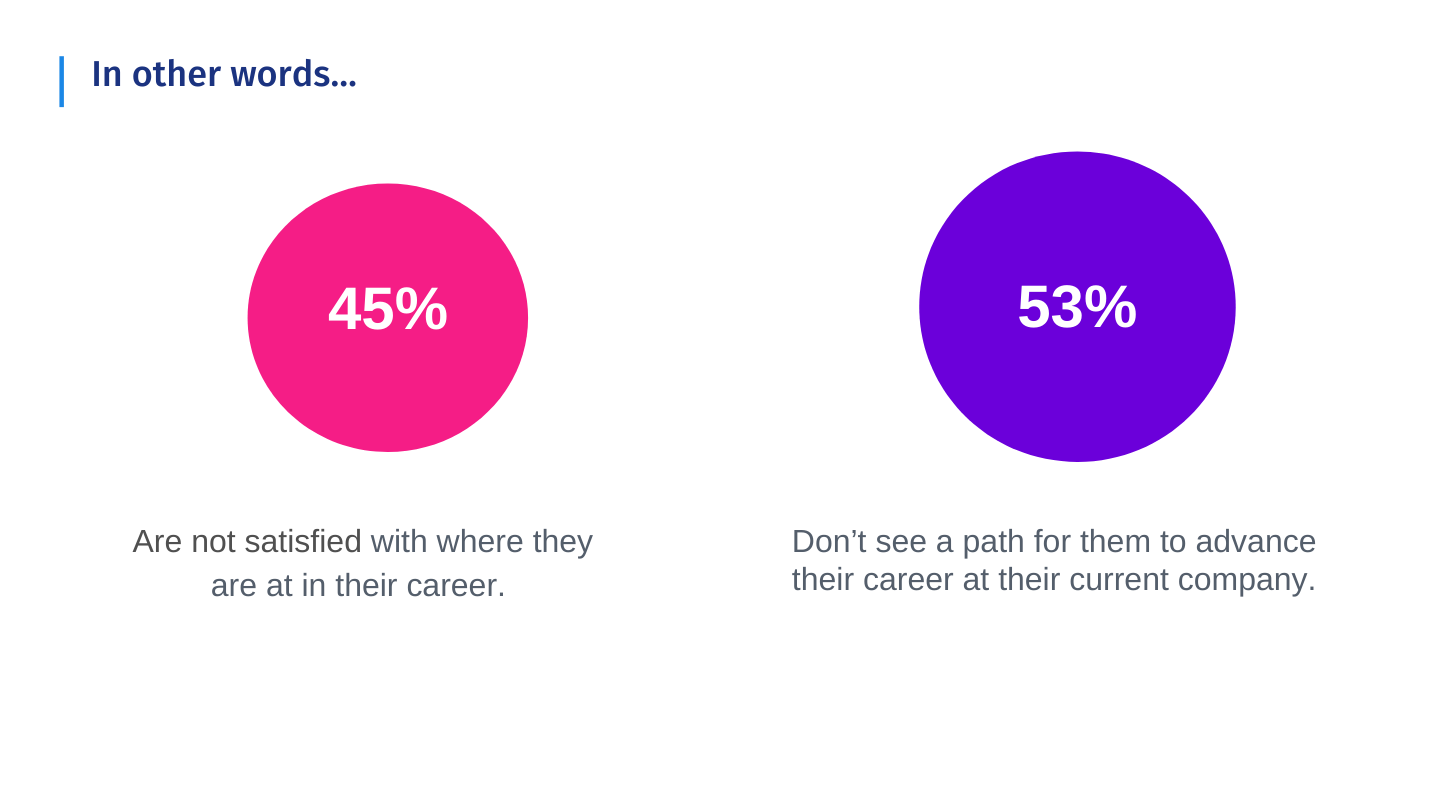
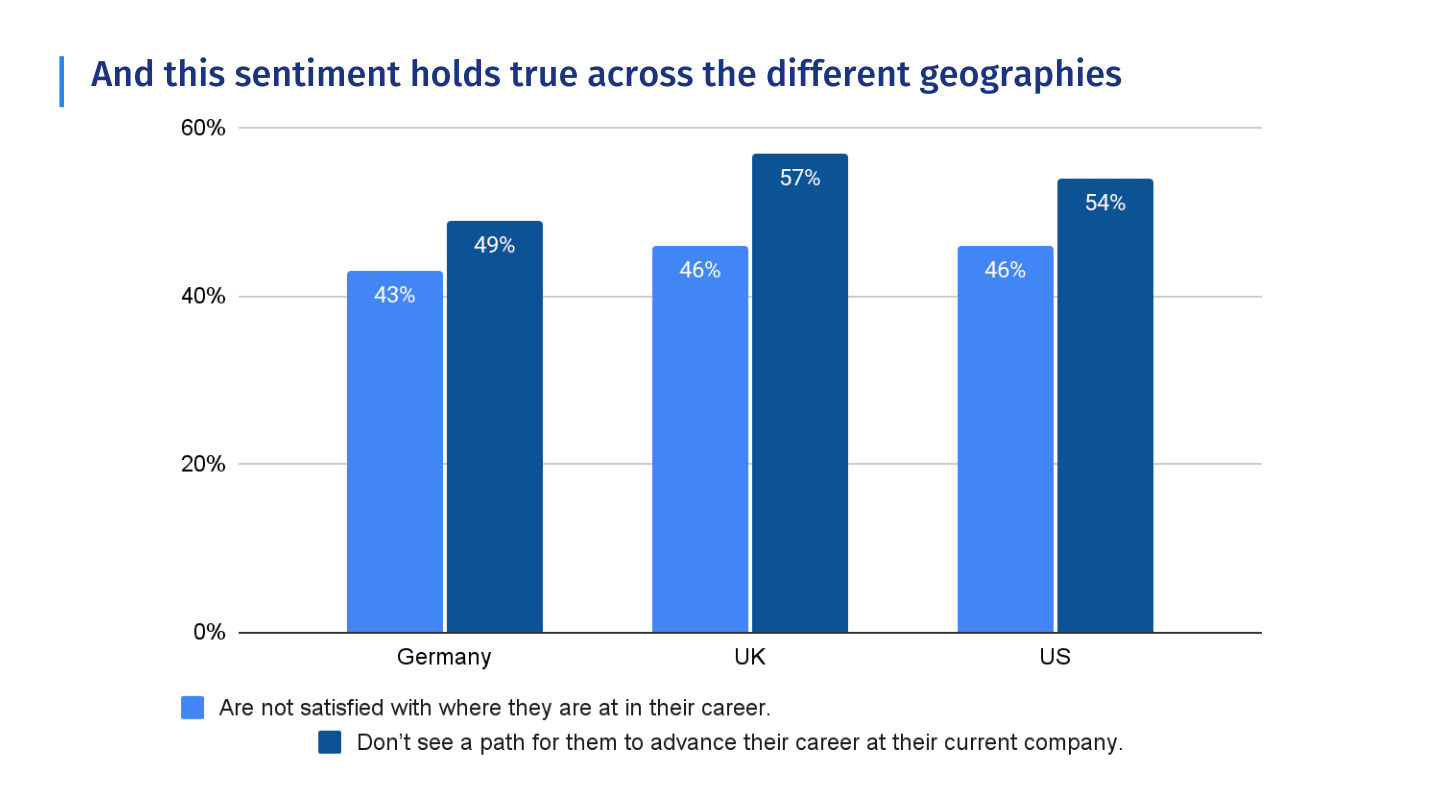
When it comes to career progression, there is much more to it than awareness of other opportunities in the organization. Whether your direct leader cares about your career progress has a significant impact on how much coaching and developing time they spend with you. And here, we found an even greater gap in experience between managers and individual contributors. While overall only 51% of workers said that their leader cares about their career progression, 62% of the managers said that their leader cares, while only 46% of individual contributors held this sentiment.
- Significantly more managers say that their leaders care about their career progress than do individual contributors.
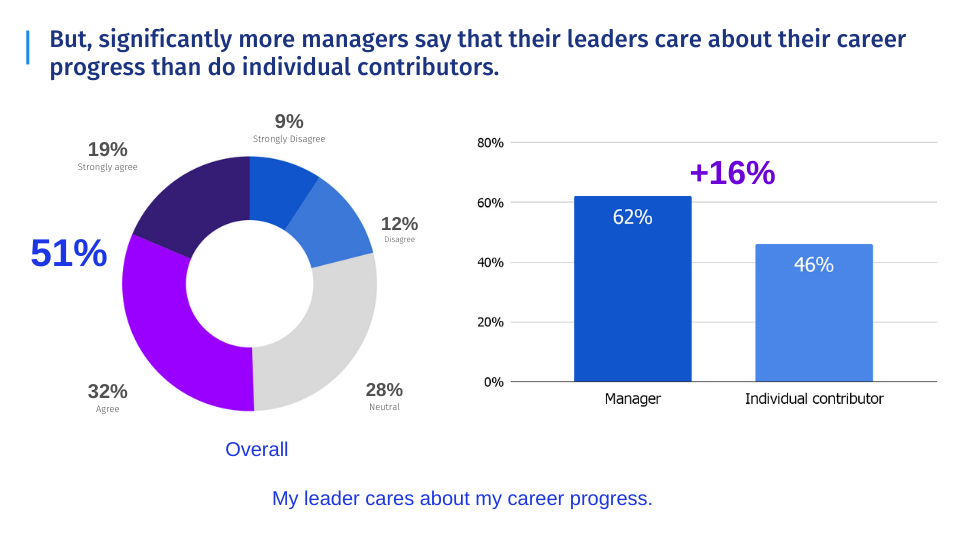
This 16% difference in how much a person believes their leaders cares about their career progress is huge. One key reason that this may be happening is that there is a difference in seniority and experience between managers managing other managers, and managers managing individual contributors. It’s possible that managers of managers, who likely have more work experience, understand the importance of helping their teams grow and develop and progress in their careers.
They also realize that their own success is directly related to the performance of their team members, so really investing time in career development of their team members is a win-win. Those with less experience may focus more on achieving their business related KPIs, and have not realized yet the strong connection between developing their people and team performance.
So, how can this be improved?
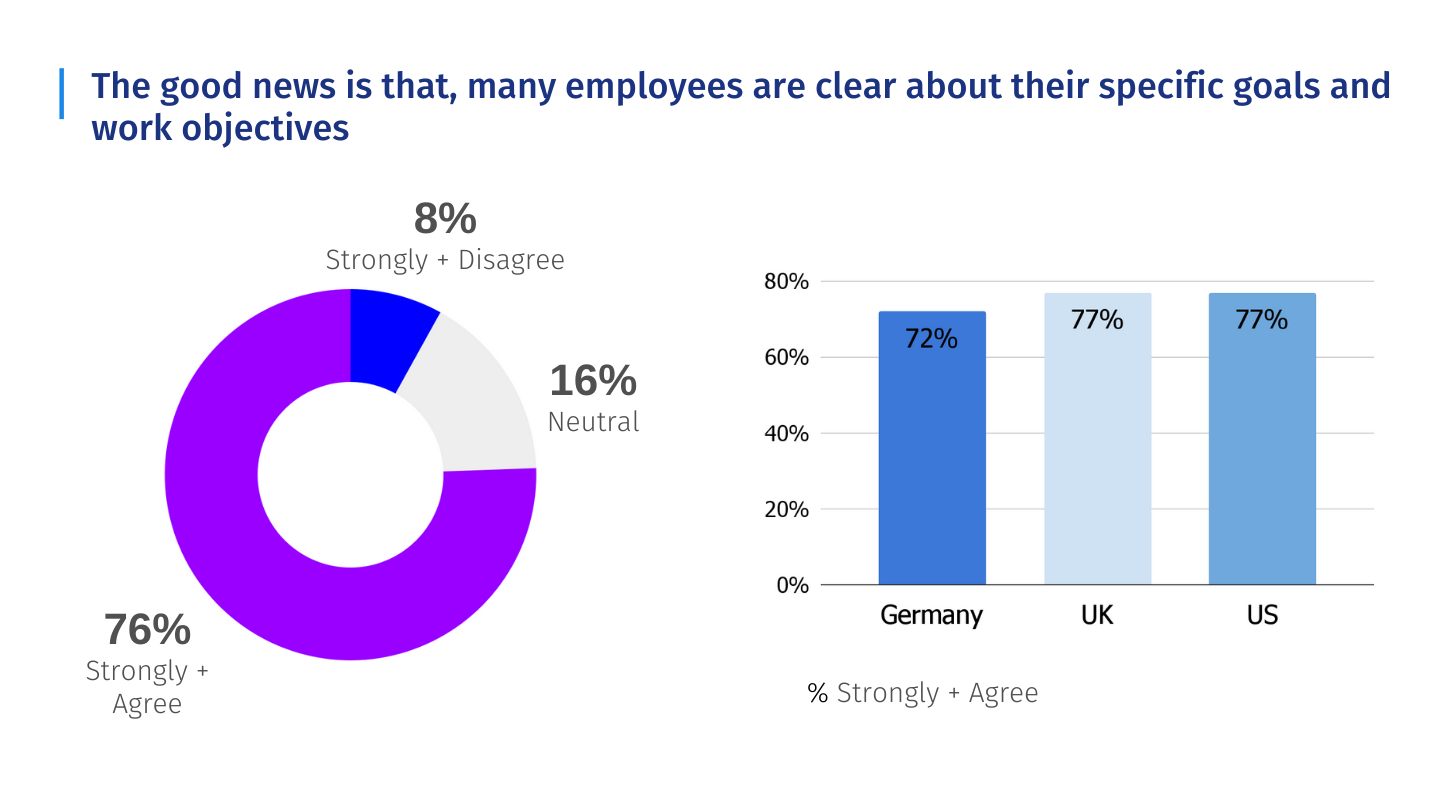
- Our research showed that 76% of employees are clear about their specific goals and work objectives.
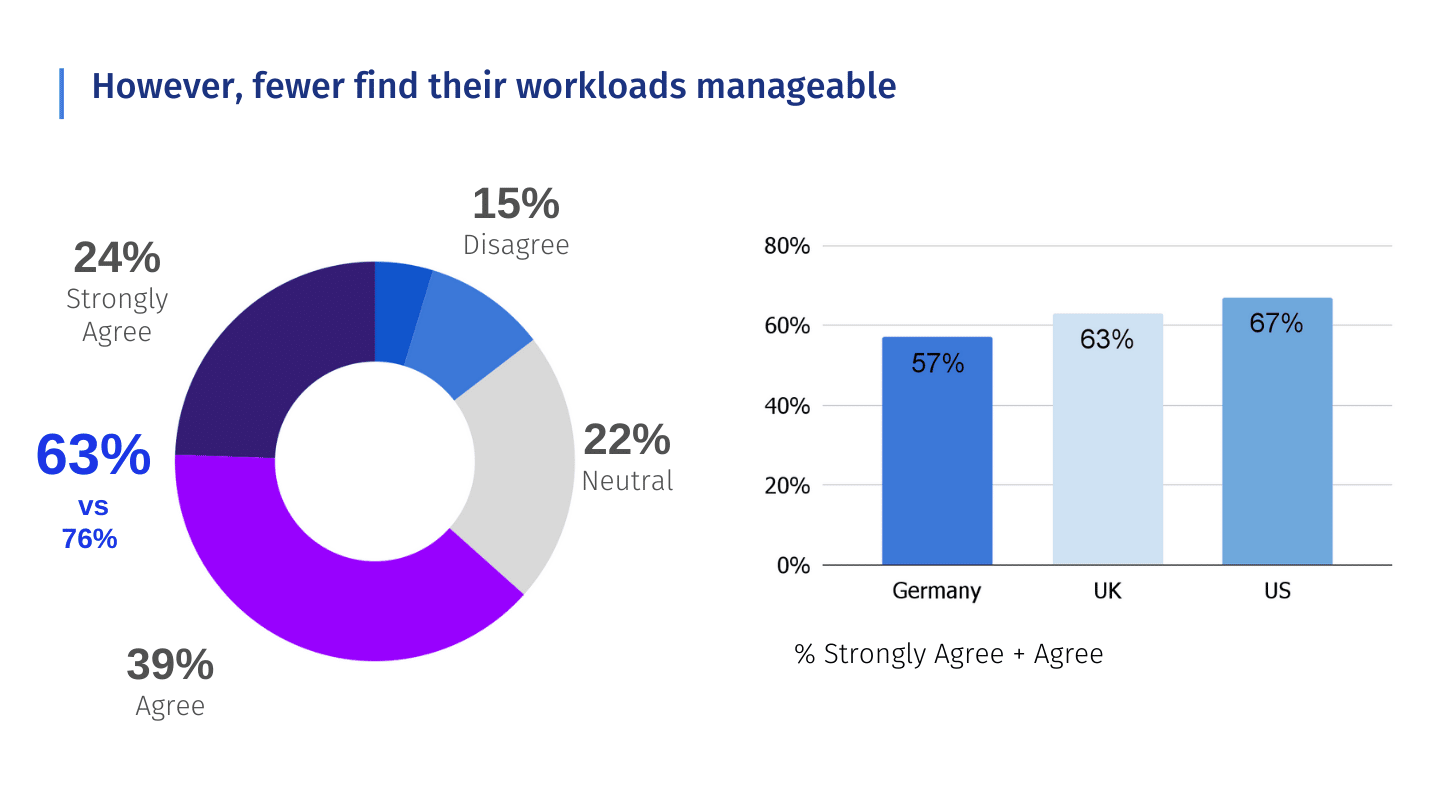
But, we see that there is a challenge with capacity. While 76% of workers say that they are clear about their goals and objectives, significantly fewer, 63%, say that their workload is manageable. It is really important for managers to work towards closing the gap between these metrics, because this is where we can see big risks for burnout and turnover.
A simple way to impact this is to collaboratively set goals with your team. It does not mean having easier goals, but understanding what your team members believe they can accomplish. In our research we saw that while 64% of managers talk with their manager about the goals and objectives before they are set, only 53% of individual contributors go through this exercise.
Checking in on goal progress over time is also critical. Sometimes unexpected events can happen, beyond a person’s control, and recalibrating goals when necessary will give a person the energy to continue to strive to accomplish them, as they will not be perceived unattainable.
Finally (for now…) communicating feedback about one’s performance is paramount to their development and success. And as we’re sure you’re seeing the trend by now, there is a difference between the quality of feedback managers and individual contributors receive, with 66% of managers said their manager communicates feedback clearly, compared to only 57% of individual contributors.
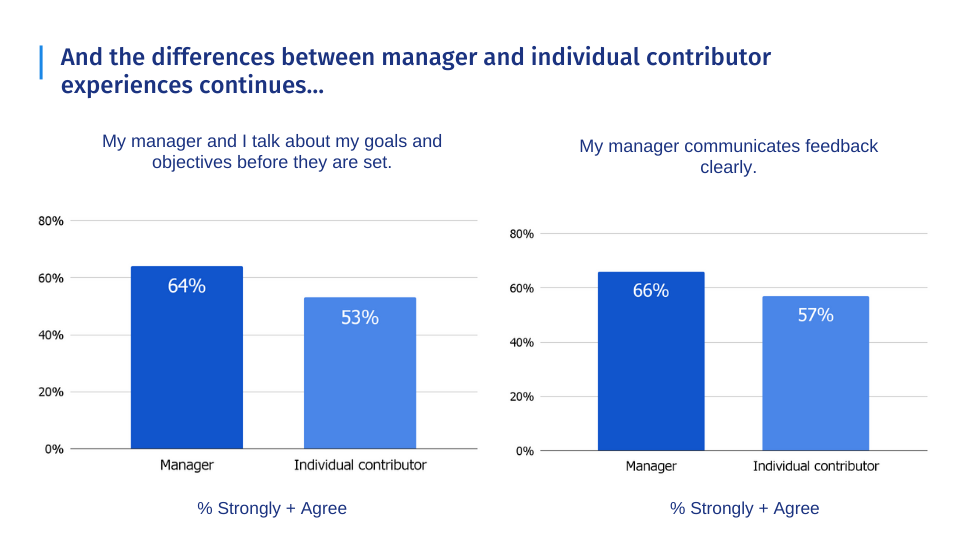
Summary of insights and action items
- Workers at different levels in the organization often experience the company culture differently. Make it a habit to run employee experience surveys to understand where this difference is the greatest in your organization and create initiatives in areas where you see the biggest gaps and misalignment with your desired organizational culture.
- Many workers are still not satisfied with where they are in their career, and they do not see a path to grow inside their organization. This is a huge missed opportunity for organizations to actively combat turnover and make sure they are keeping their top talent. Make sure that someone in your HR or People department has it as a part of their responsibilities to keep all internal openings updated, and to communicate to employees on an ongoing basis where they can find a listing of these opportunities. The same goes for any employee training and development courses, you can never over communicate too much about what is available and how to sign up.
LEARN ABOUT: Workplace Employee Experience Examples
- When it comes to setting objectives, while many workers are clear on what is expected of them, they doubt their ability to achieve their goals and objectives. One of the greatest ways to make an impact is to discuss goals with employees before they are set, and provide clear, ongoing feedback. This sounds like performance management 101, but as everyone is running to accomplish their goals, some of these best practices can get away even from the best of us.
LEARN ABOUT: Work culture
Ready to create a workplace culture where everyone can reach their full potential? Learn more about how to get ongoing feedback from your employees and start taking action to make a positive impact in your organization with QuestionPro Workforce.





